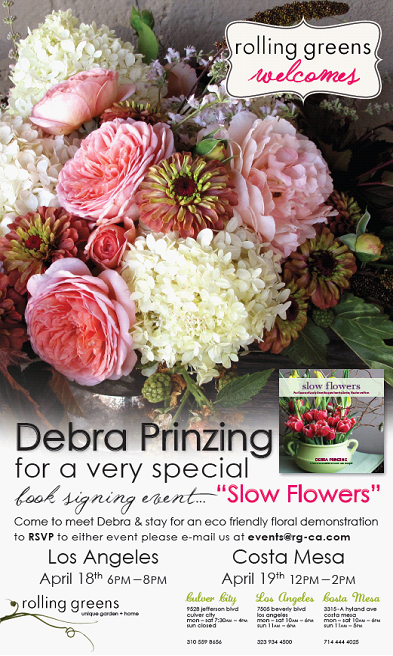


Ingredients:
Kerria japonica ‘Variegata’, which has white-edge leaves
Flowering quince (Chaenomeles x superba), available in coral, red, pink or white
Vase:
17-inch tall x 7-inch diameter cream urn. This is my go-to vase for last-minute arrangements and it is tall enough to handle the branches, which are nearly three feet long.
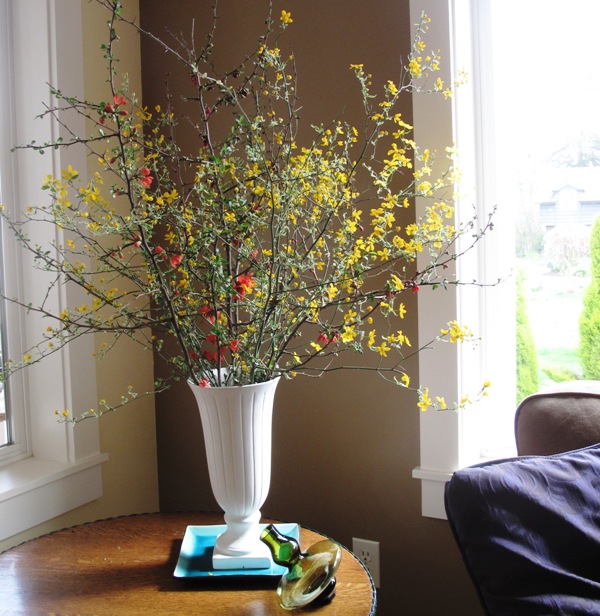
If you add cut branches to the vase when the flowers haven’t yet opened, the warmth of your home will coax them into flowering indoors. . . for up to two weeks.
From the Farmer
Jump-start spring: Many flowering shrubs and trees are suitable for indoor forcing. In addition to Kerria and quince, you can cut the bare branches of forsythia, witch hazel and numerous fruit trees. Harvest branches when their buds begin to swell, taking care to use proper pruning techniques. Re-cut the stems on a 45-degree angle and place them in a vase of clean water. Over time, the buds will respond to your home’s warmer temperature and begin to flower. Be sure to change the water as you would with any floral arrangement.
NOTE: Each Sunday of this year, I will post my photographs, “recipe” and tip for that week’s floral arrangement, created for my new book, Slow Flowers.
Enjoy the floral journey through 52 weeks of the year~
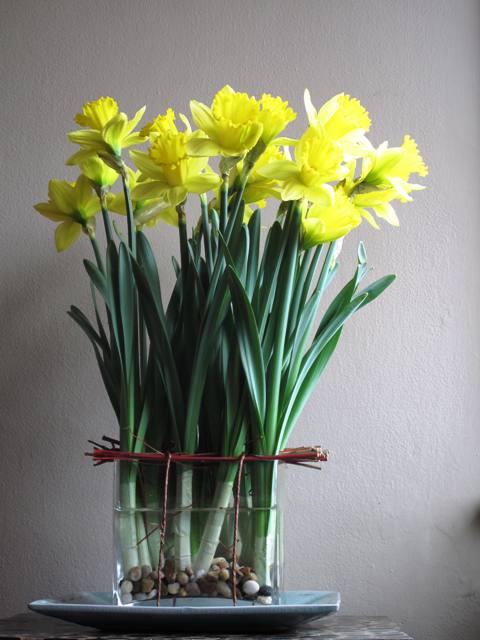
Showcasing a single type of flower – here, it’s spring daffodils – this technique is easy and carefree.
Ingredients:
15 stems common daffodils, from my garden
Multiple lengths of coral-pink twig dogwood, cut approximately 2 inches wider than the vase opening. Any straight, woody branch will work, including vine maple, pussy willow or the colorful twig dogwood (Cornus sanguinea or C. sericea)
Vase:
6-inch tall x 6-inch square glass vase (this design adapts to any square or rectangular glass vase)
Other supplies:
Decorative pebbles
Twine-wrapped wire (available at craft stores in natural or green)
Design 101
Borrow inspiration: The idea for this bouquet came from a project featured in Design, a publication of The Flower Arranging Study Group of the Garden Club of America. Whenever you’re inspired by another designer’s technique, it’s important to give it your own twist rather than make a direct copy. For example, the original creation used florist’s foam inside the container, but I found it unnecessary, especially since the pebbles and twigs are enough to hold the daffodil stems in place.
NOTE: Each Sunday of this year, I will post my photographs, “recipe” and tip for that week’s floral arrangement, created for my new book, Slow Flowers.
Enjoy the floral journey through 52 weeks of the year~
Been busy here . . . in the midst of Flower & Garden Show season, so I missed last week’s bouquet. Let’s play catch up and here, I’ll feature Week 8 and Week 9:
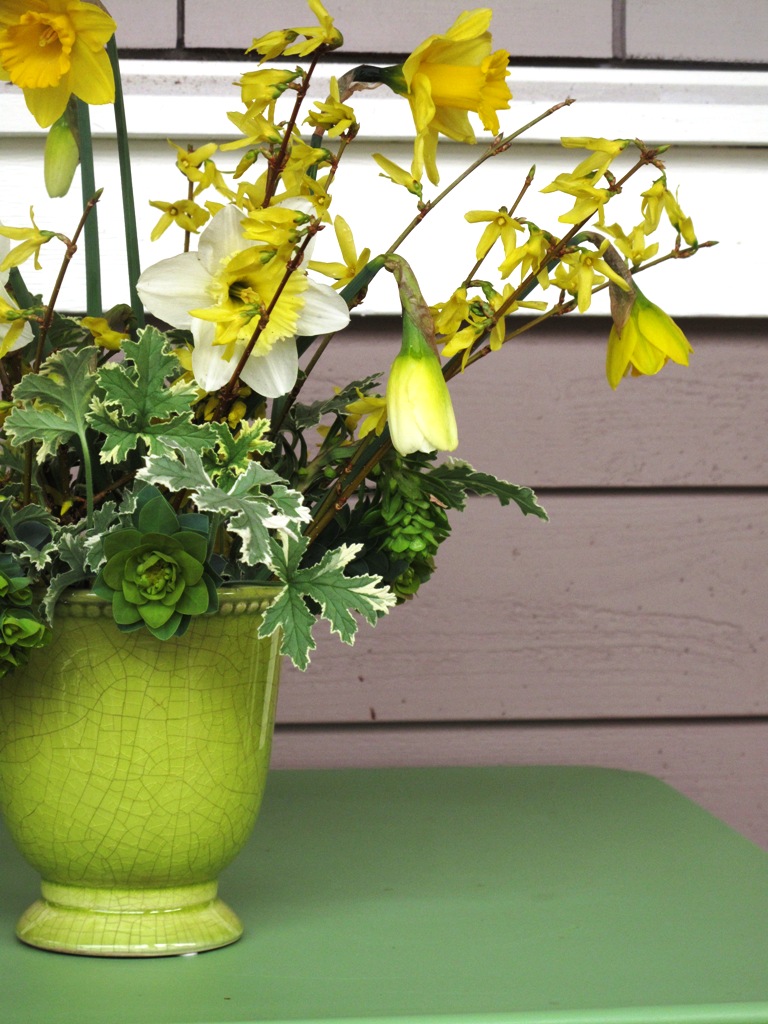
Oh how I love this combination of everyday garden blooms, including daffodils, forsythia and euphorbia – with a few sprigs of variegated geranium for contrast.
Ingredients:
8 stems hyacinths (Hyacinthus orientalis), grown by Alm Hill Gardens
Seasonal Choices
About those long stems: The typical garden hyacinth blooms on a relatively short stem – maybe 4-5 inches at the most. This limits the way hyacinths can be used in floral arrangements. According to Gretchen Hoyt, the way to stretch those stems is to trick them into wanting more light. “The longer you can deny them light, the more they stretch,” she explains. At the commercial flower farm, this process begins in dark coolers where bulbs are pre-chilled. When they are transferred to the greenhouse, the hyacinth crates are placed (in the shadows) beneath tables where tulips grow. If Gretchen wants to elongate those stems even further, “I’ll throw newspaper over them,” she says. Leaving bulbs on the stems is optional, but some designers do so to give the arrangement a rustic appearance.
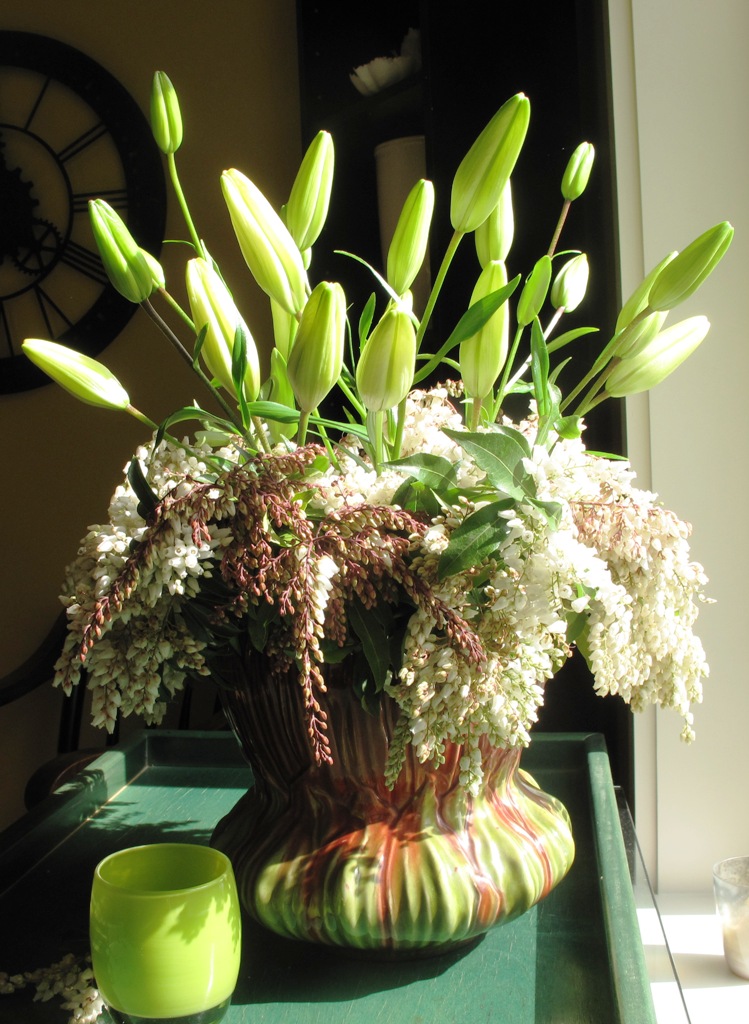
Two “lily” elements fill my antique majolica cachepot, set in the dining room window to catch the rare winter rays of sunshine
NOTE: Each Sunday of this year, I will post my photographs, “recipe” and tip for that week’s floral arrangement, created for my new book, Slow Flowers. Enjoy the floral journey through 52 weeks of the year~
Eco-technique
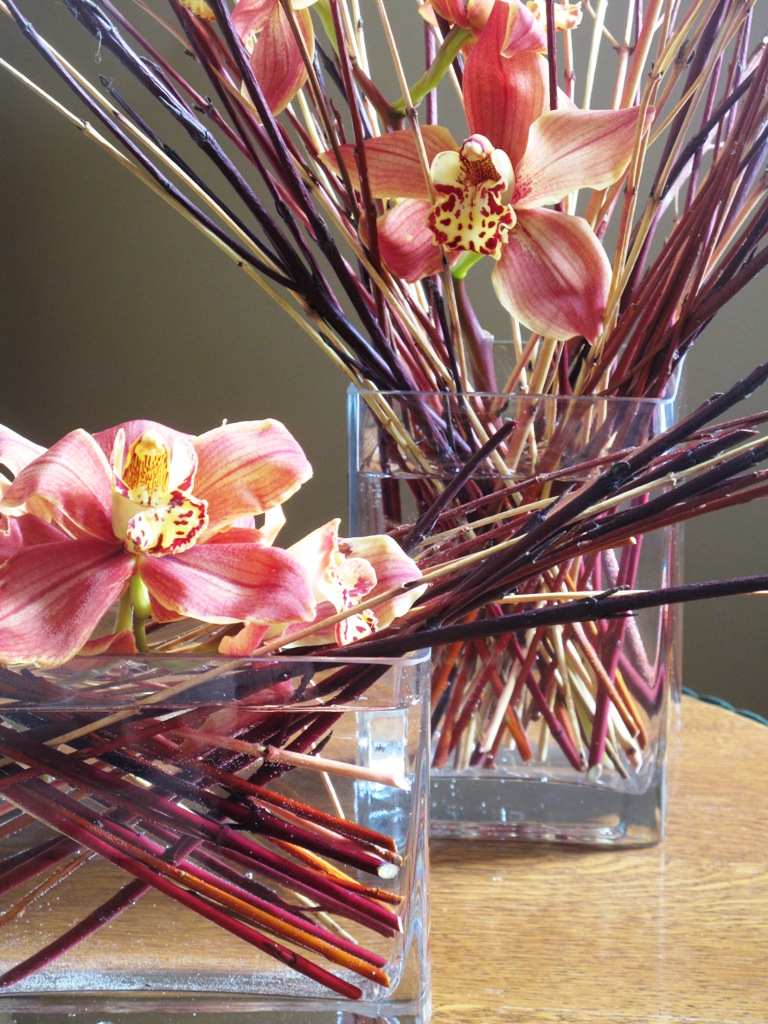
A classic indoor plant, each cymbidium stem holds several blooms – the antidote to a dreary winter day.
Ingredients:
Vase: 5-inch tall x 9-inch wide cobalt blue vintage bowl with 6½-inch opening
© Debra Prinzing, all written and photographic content. Website design/development by Willo Bellwood/Metric Media